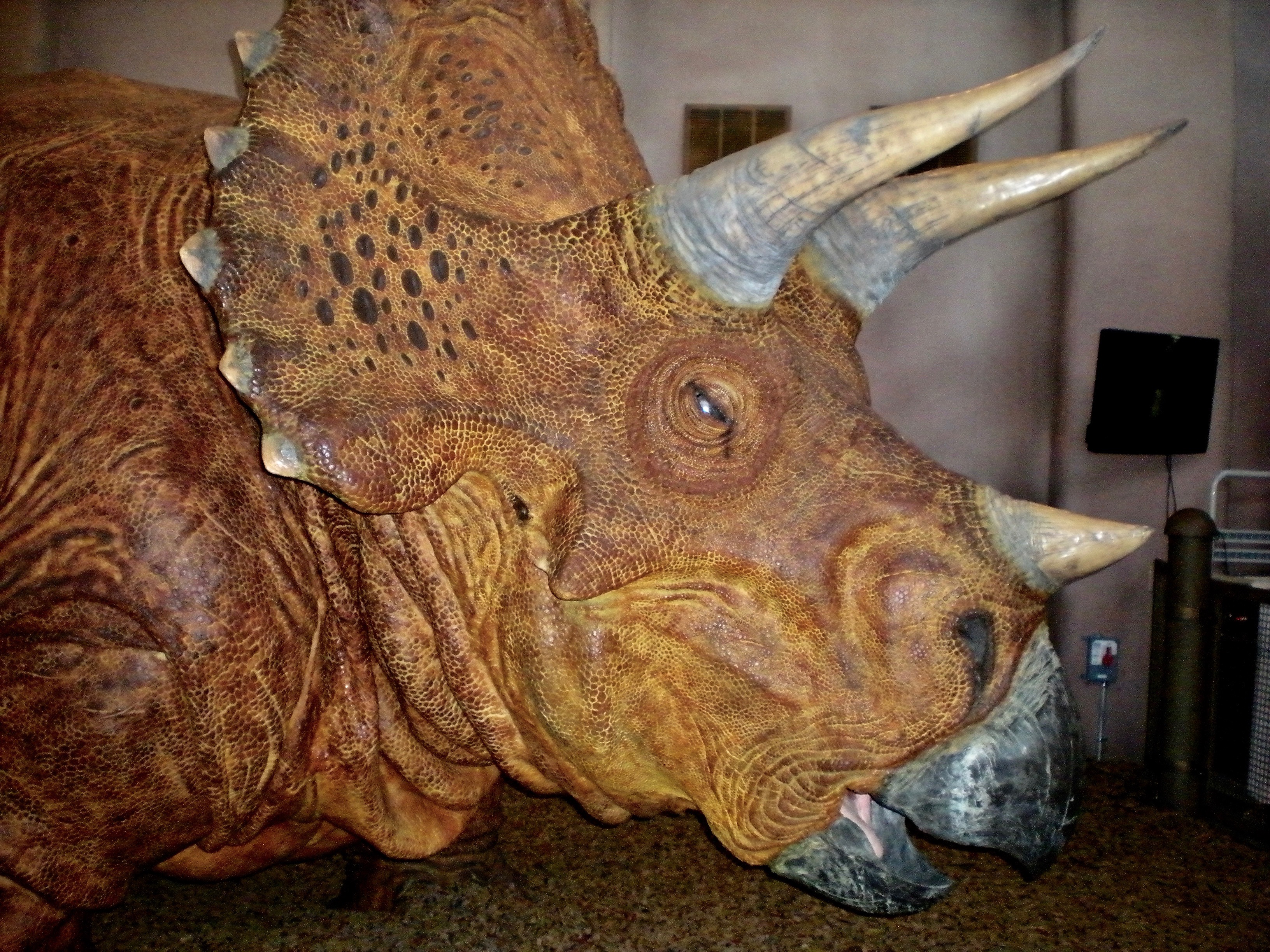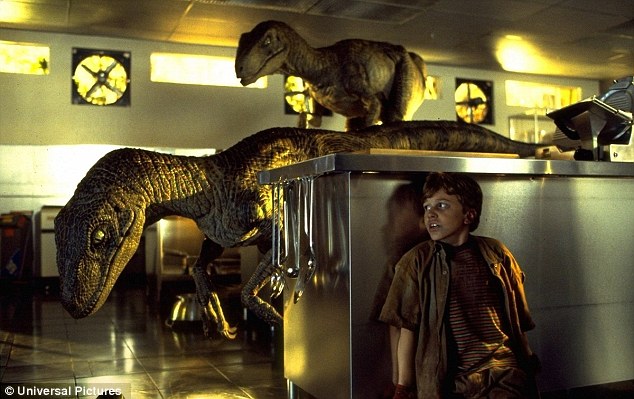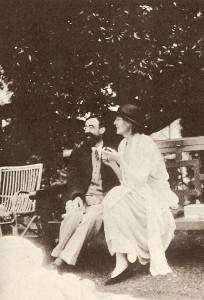 Photo of Animated Triceratops at Universal’s Island of Adventures, Orlando, FL
Photo of Animated Triceratops at Universal’s Island of Adventures, Orlando, FL
What do the dinosaurs of the past have to do with us today?
The first time I remember thinking about what really makes a dinosaur, was watching Steven Spielberg’s academy award-winning picture Jurassic Park (1993), where dinosaurs are brought back to life through the magic of DNA cloning. In the film, the small island of Isla Nublar is the home to a theme park built from the imagination of John Hammond, a billionaire philanthropist who spares no expense.
Adapted from Michael Crichton’s novel, Jurassic Park is a wildlife park of cloned dinosaurs that escape their enclosures and start hunting the humans. In one of the film’s most iconic scenes we find siblings Lex and Tim trapped in a kitchen by two raptors. As can be seen in the picture below the raptors tower over the children seeking out the siblings in a terrifying game of hide and seek.
 Photo Copyright Universal Studios, Film Stills: Jurassic Park (1993)
Photo Copyright Universal Studios, Film Stills: Jurassic Park (1993)
But according to Jurassic World’s palaeontology consultant, Jack Horner, the horse-sized beasts with fangs and claws that dawn the screen as raptors, have not been portrayed accurately as discussed Continue reading “Articulating Dinosaurs & Religions (The Story of Us)”




 Photo of Animated Triceratops at Universal’s Island of Adventures, Orlando, FL
Photo of Animated Triceratops at Universal’s Island of Adventures, Orlando, FL Photo Copyright Universal Studios, Film Stills: Jurassic Park (1993)
Photo Copyright Universal Studios, Film Stills: Jurassic Park (1993) Discussing her observation of a man and a woman getting into a taxi, Virginia Woolf declares in
Discussing her observation of a man and a woman getting into a taxi, Virginia Woolf declares in  The recent fad of Flappy Bird, and its removal by the independent game creator, has raised some significant angst. Why has such a simple, low budget video game enraptured people so much that they consume hours of their day trying to beat their high score, like a movie buff with a limitless supply of popcorn? If you have not experienced its addictive power, this
The recent fad of Flappy Bird, and its removal by the independent game creator, has raised some significant angst. Why has such a simple, low budget video game enraptured people so much that they consume hours of their day trying to beat their high score, like a movie buff with a limitless supply of popcorn? If you have not experienced its addictive power, this  Almost ten years ago, the folks at Dove personal care products created quite a stir with their “Real Beauty” campaign. The photo above became one of the iconic emblems of Dove’s self-described attempt to change the definition of beauty to include “real bodies,” perhaps better defined as the bodies of average women. While Dove’s initial goal with this campaign was to “widen the narrow definition of beauty,” it has lately described a shift in focus onto building female self-confidence and self-esteem, calling the latest incarnation of its work “an unprecedented effort to make beauty a source of confidence, not anxiety.”
Almost ten years ago, the folks at Dove personal care products created quite a stir with their “Real Beauty” campaign. The photo above became one of the iconic emblems of Dove’s self-described attempt to change the definition of beauty to include “real bodies,” perhaps better defined as the bodies of average women. While Dove’s initial goal with this campaign was to “widen the narrow definition of beauty,” it has lately described a shift in focus onto building female self-confidence and self-esteem, calling the latest incarnation of its work “an unprecedented effort to make beauty a source of confidence, not anxiety.”